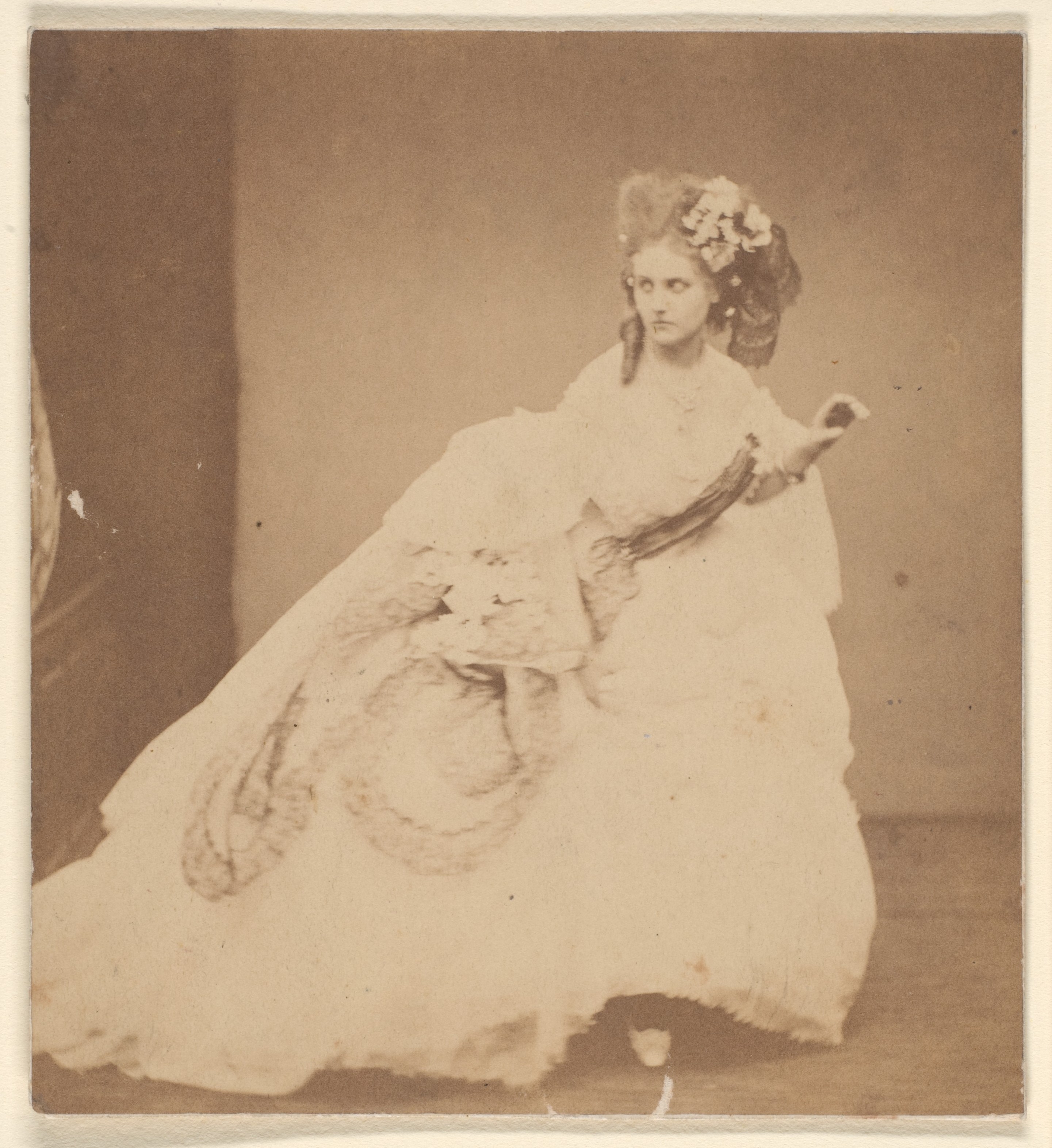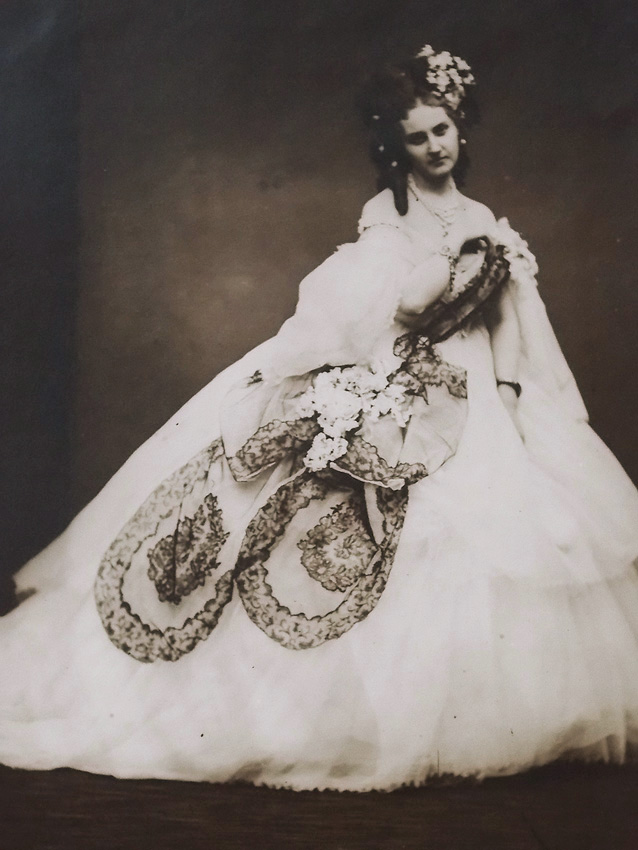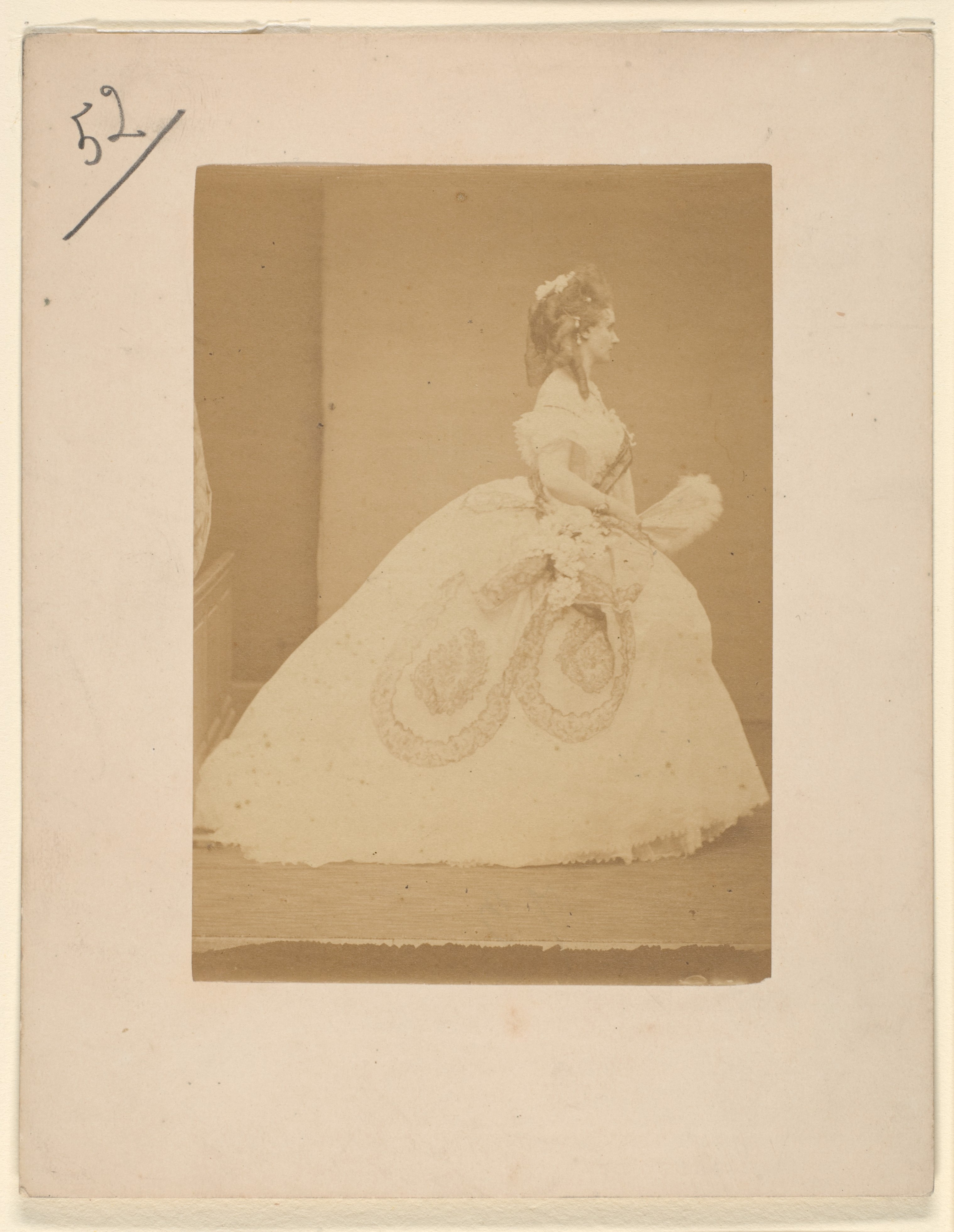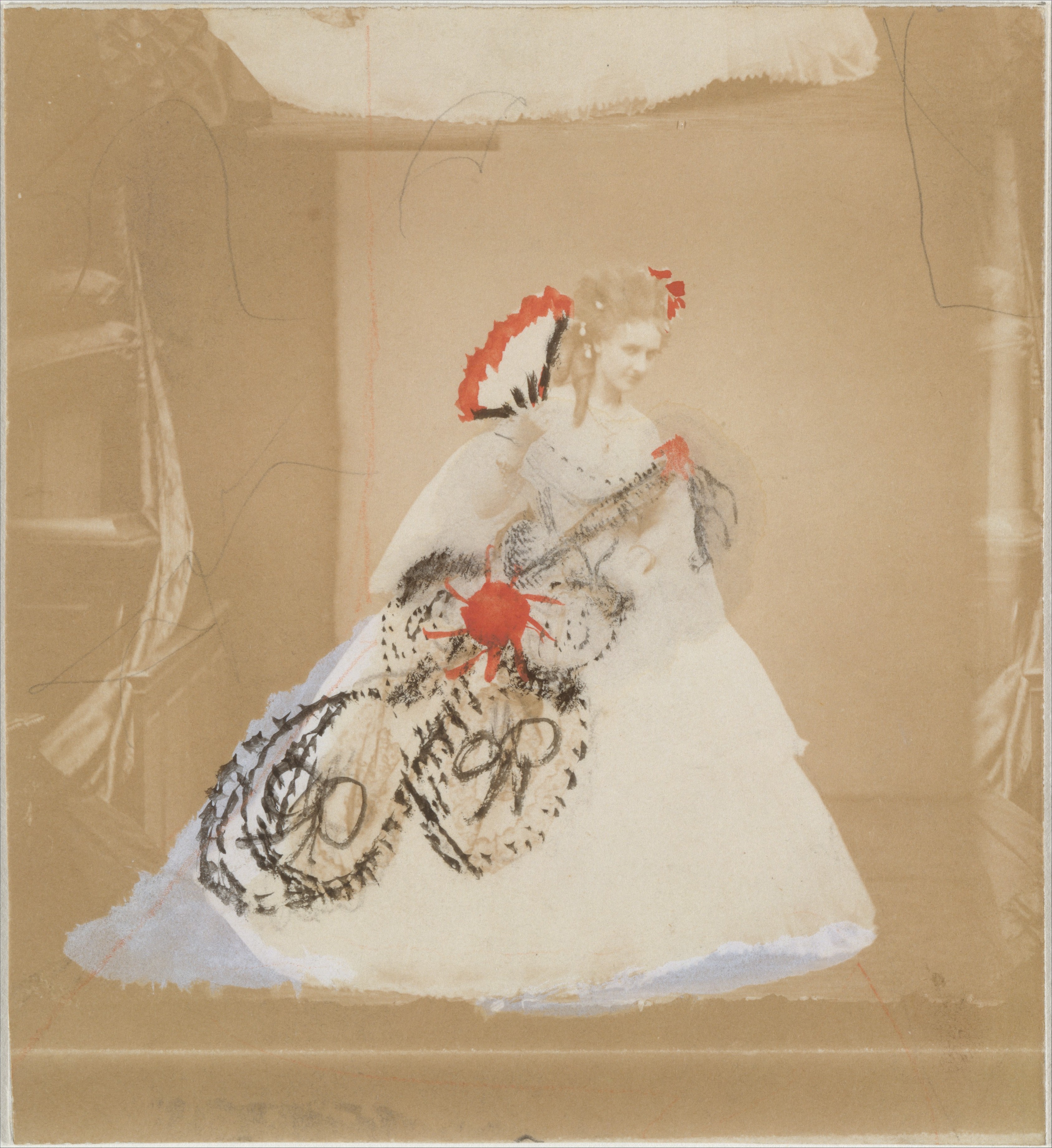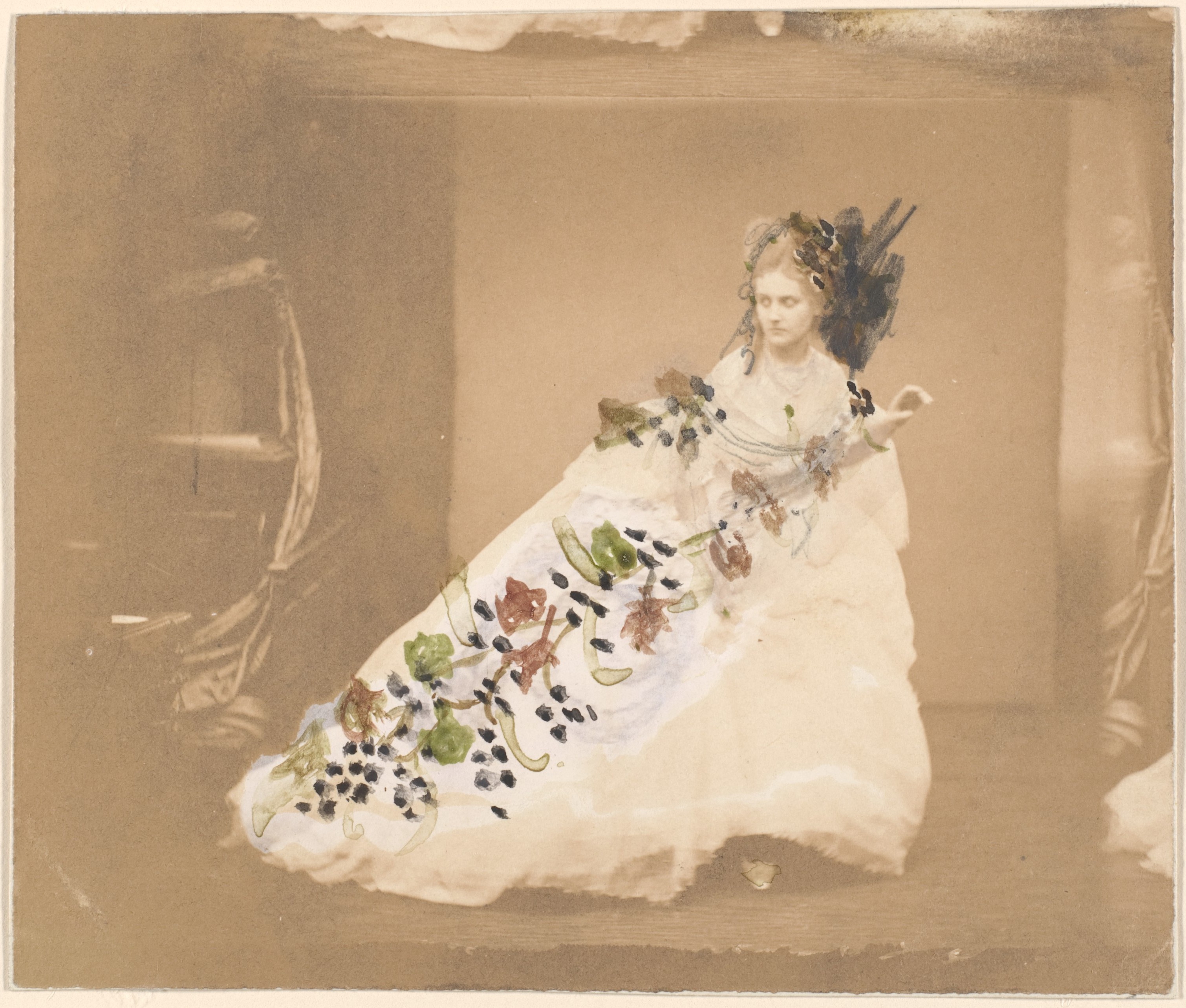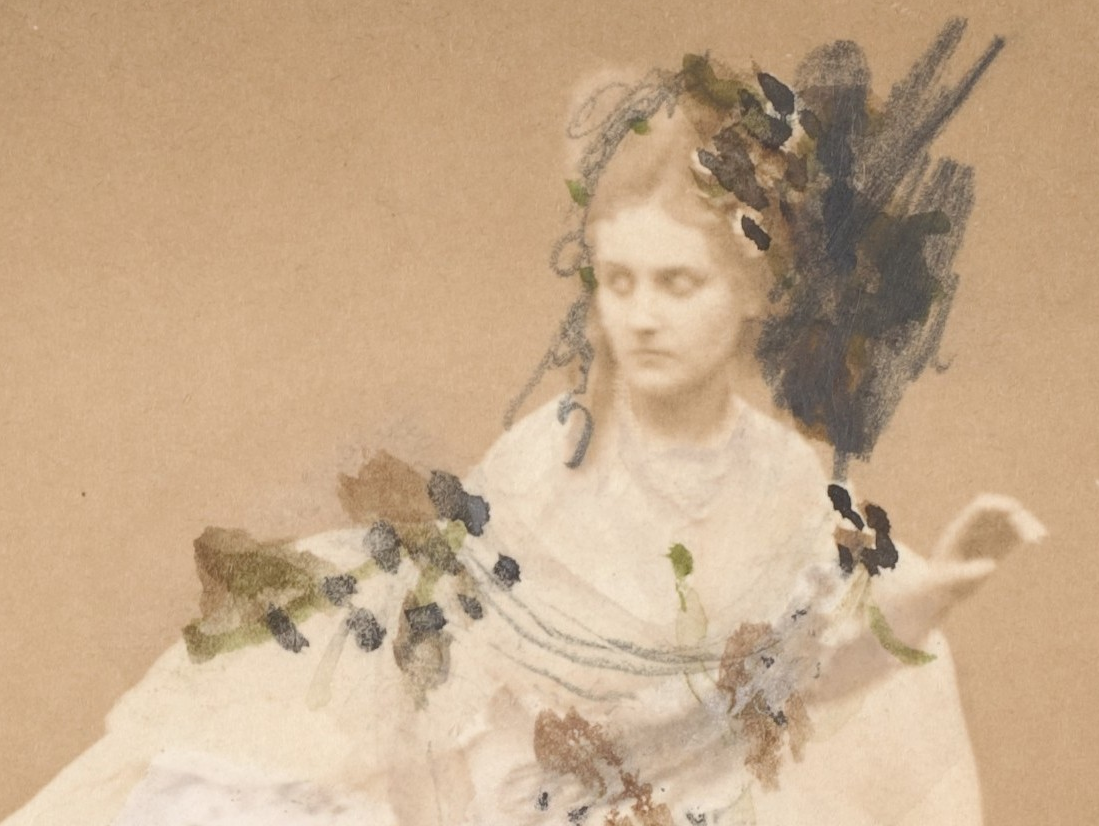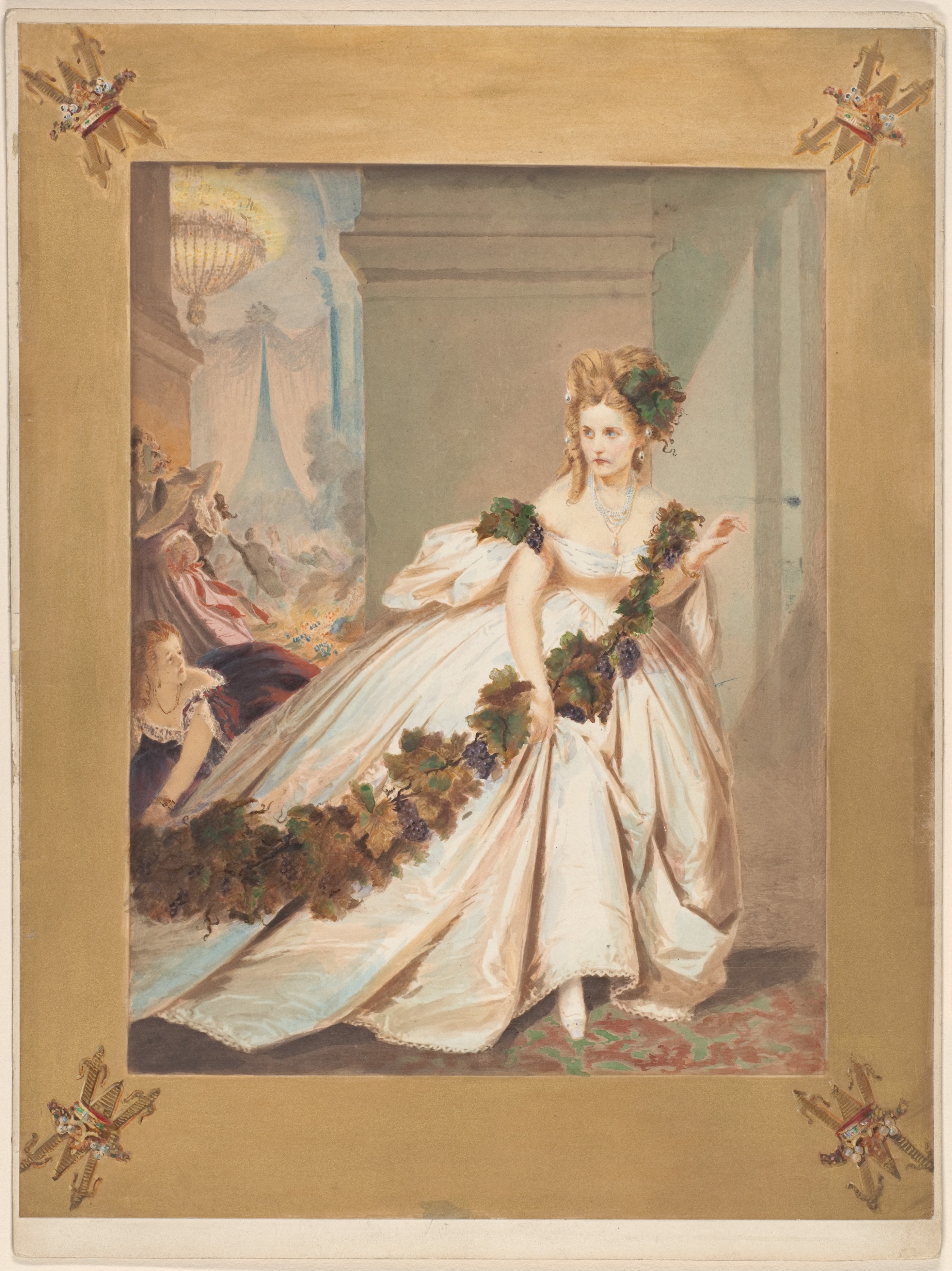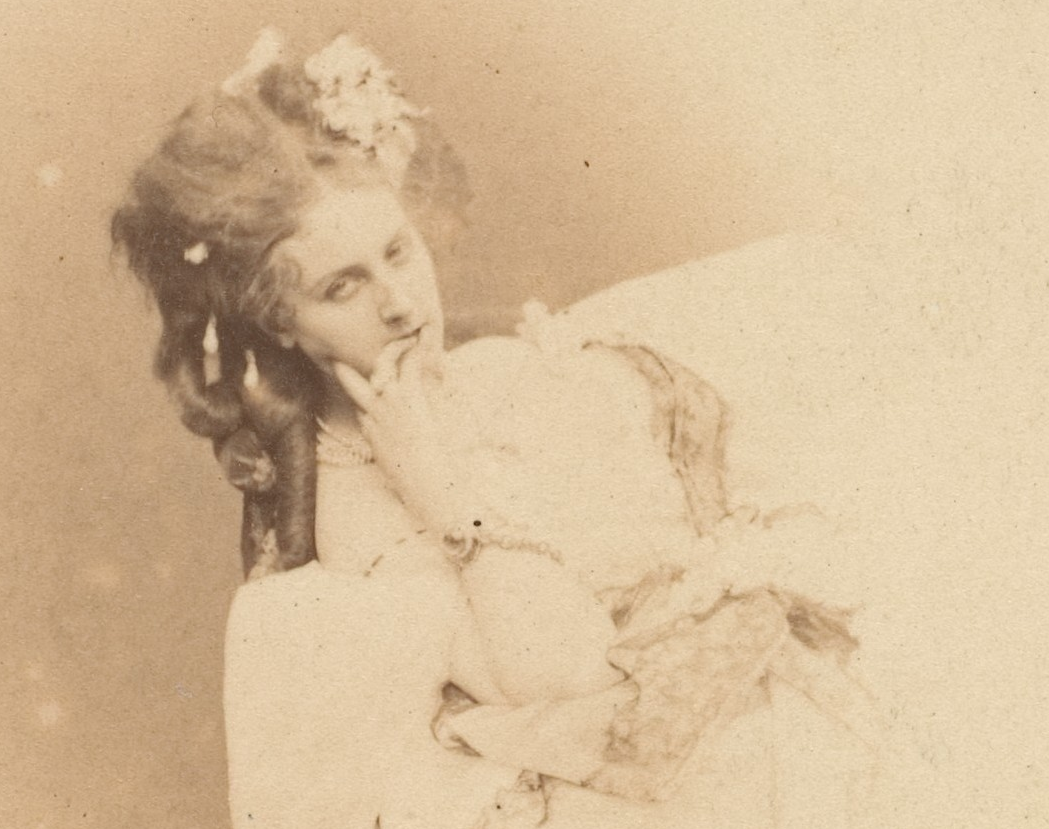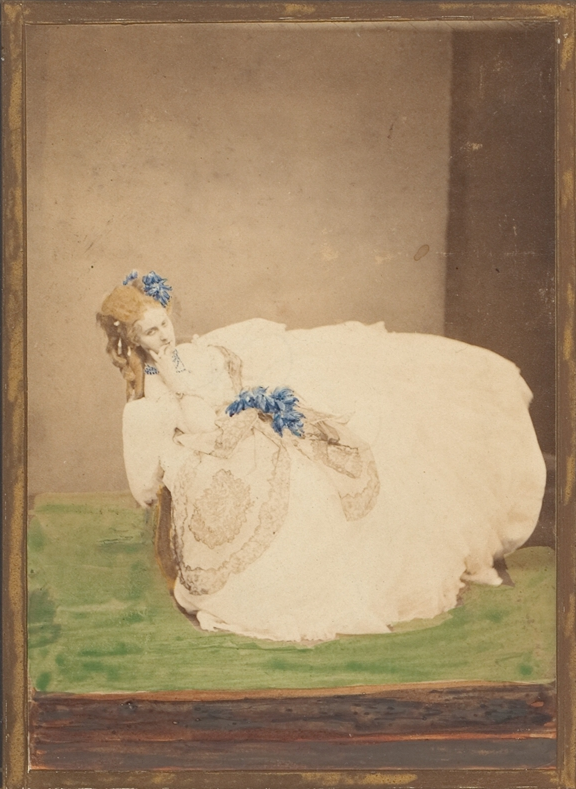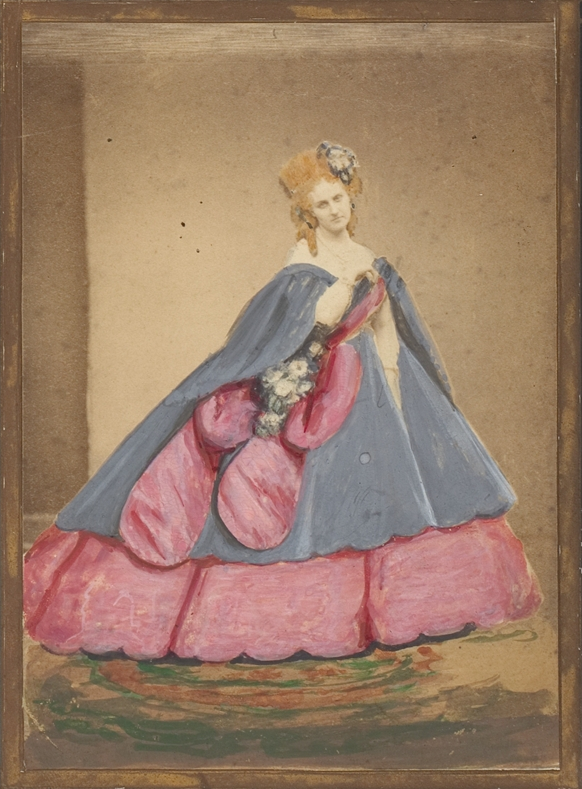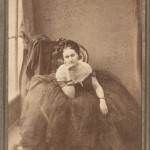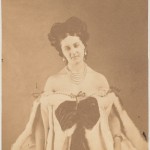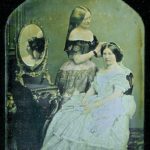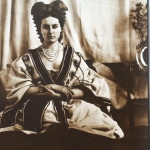Contessa Virginia Oldoini di Castiglione (le noeud de dentelle, “Ritrosetta”) by Pierre-Louis Pierson, 1860s
A study for a large painted version, this photograph was summarily retouched by the countess with instructions (on the back) suggesting that the composition was intended to set off her elegant attitude and majestic gown: “The remains of a ball where fire has broken out. A chandelier on the floor, everyone in flight. Shining white satin gown, black and red grapes with dark green and red leaves. See more at: Met Museum
This painted photograph shows the Countess escaping a “well-behaved fire,” as ironically described by Montesquiou. The imminence of danger is tempered by the elegance of the attitude and the majesty of the ball gown of white satin crossed with a large garland of view branches, the same outfit as in “Ritrosetta” but transformed according to the Countess’s instructions. This painted photograph is a copy of a larger composition painted by Schad, once in the Montesquiou collection; its present whereabouts are unknown. In 1922 a painted photograph of a similar subject was part of the Marquise Casati collection (see “Le décor de la vie…,” Palais du Louvre, Paris, 1922, exh. cat. no. 425). [PA; “La Divine Comtesse”, p. 173] This print was housed together with Béatrix in Maurice Levert’s collection, and sold as part of the same lot; as with Beatrix, there was a larger version again by Schad once in the Montesquiou collection and one (another?) owned by the Marchesa Casati in 1922; see an original salted paper print in the Montesquiou group, painted and notated on the verso by the Countess herself, giving instructions on how to paint this and the larger version: “The remains of a ball where a fire has broken out. A chandelier on the floor, everyone in flight. Shining white satin gown, black and red grapes with dark green and red leaves; omit hair at the temples; replace with vine; same movement to stop at top right; cover all the right-hand side of the hair with ground color”, as well as an original albumen silver print, unpainted, in the Montesquiou album. See more at: MET Museum
Via: MET Museum, Vintage Works

